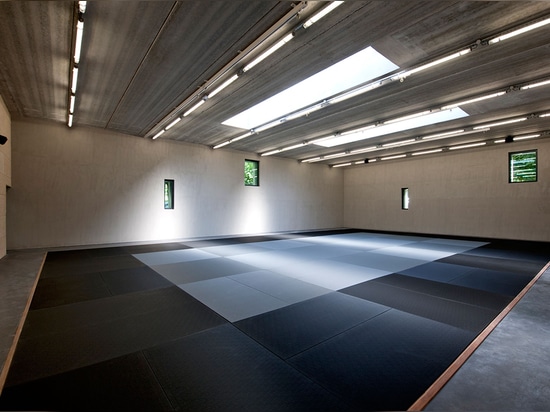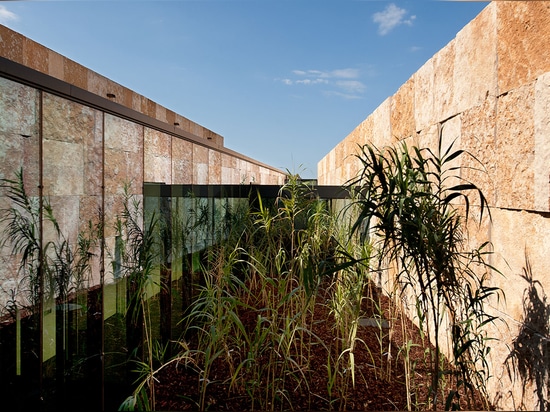
#PUBLIC ARCHITECTURE PROJECTS
Roman games: new sports hall in Provence inspired by city's cultural heritage
In the Ancient Roman times, Saint-Cyr-sur-Mer, a small, costal town in Provence, France, was known as Tauroentum. The remains of a 1st-century seaside villa, complete with a series of artefacts, serve as a reminder of those times today - as well as provide architectural inspiration to local creatives.
Commissioned to design a sports complex that would cater to the local high school, sports clubs, and the women's handball team, Marseille based architect Christophe Gulizzi says that his project has been 'profoundly influenced by its physical, geographic, climatic, but also cultural context.'
In Gulizzi's words, the building became a means that allowed him to talk about the identity of the city. Located in a 'transitional area' where houses of a 'fake bastide type' meet the postmodernist architecture of public facilities, his design borrows from Saint-Cyr's Roman past to balance out different scales and styles.
The architect is known to maintain an honesty in his use of materials. A frequent user of stone and concrete, in this project he opted for limestone, a material that is 'age-old and highly contemporary at the same time.' The facades are composed of 998 stone blocks, each weighing about a ton. Their rugged surface makes the most of the southern sun with its striking contrast of light and shadows. Layered one by one, they embody the rhythm of this simple and ancient construction process. Narrow windows of the street-facing facades appear as random gaps in the monumental stonework.
Inside, a fluid circulation path connects the different parts of the complex and eventually crosses a planted patio, forming an 'interior promenade' with a subtle reference to a cloister. Always aiming to create specific atmospheres in each of his projects, here Gulizzi hopes to provide not only convenient training facilities for the city, but also 'a place to live' in which, even a humble corridor becomes part of the experience.





